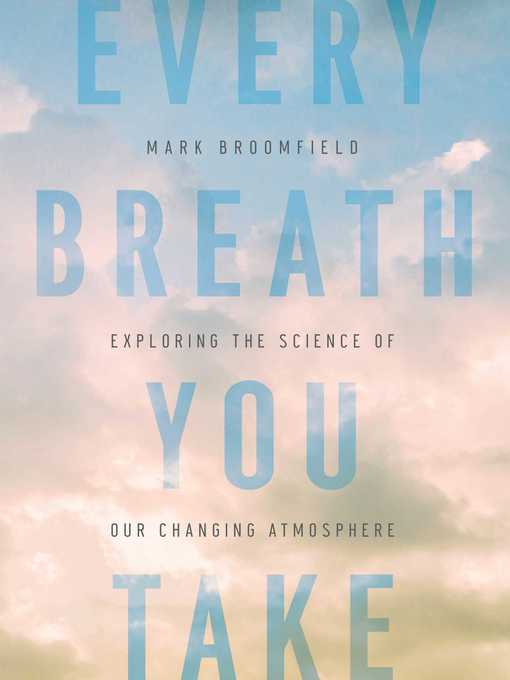
Every Breath You Take
Exploring the Science of Our Changing Atmosphere
کتاب های مرتبط
- اطلاعات
- نقد و بررسی
- دیدگاه کاربران
نقد و بررسی

May 18, 2020
With this illuminating volume, debut author Broomfield, an air-quality specialist at an environmental consulting firm, brings readers on a “theoretical journey through the atmosphere” in accessible and sometimes wry prose. He begins outside the solar system, with one of the first Earth-like planets discovered to have an atmosphere, and works his way back toward Earth. He explains how Jupiter and Saturn are “pretty much gas all the way down—or putting it another way...100% atmosphere” and that Mars has its own snow, “though not the watery stuff that we’re familiar with, but flakes of solid carbon dioxide.” To explain differences in air pressure and oxygen levels, Broomfield recalls travels to the Himalayas, where, at nearly 17,000 feet above sea level, he found himself “breathing hard when engaged in strenuous activities such as doing up a shoelace or standing still.” What most readers will likely find particularly relevant are Broomfield’s chapters on air pollution and mortality. He focuses on China and India, whose coal-dependent industries have, in recent decades, made air quality in both countries abysmal. He also gives reminders of how bad smog used to be—and occasionally still is—in Western cities like Los Angeles and London. Broomfield’s helpful look at the air up there, thanks to its breezy tone and solid insights, will make the links between pollution and health both tangible and intriguing to a general audience.

August 1, 2020
An explanation of the atmosphere with an emphasis on the parts that don't belong. Broomfield, a British chemist specializing in air quality, reminds readers that before global warming caused by greenhouse gases became a universal preoccupation, scientists studying the atmosphere worried about air pollution. Most greenhouse gases are not poisonous. This is definitely not the case with pollutants, which cause as many premature deaths as smoking. The good news is that, unlike the case with global warming, the battle against air pollution has seen genuine progress. The oldest pollutant is probably sulfur dioxide from burning fuels, mostly coal. It produced the famous toxic London fogs that peaked during the 1950s and produced the first effective anti-pollution laws, which have reduced levels by 95% in nations where laws are effective. In the 1920s, when leaded gas was introduced, everyone knew that burning it released poisonous lead, but burning unleaded gas produces equally toxic byproducts. The solution was the catalytic converter, which also eliminated another pollutant: carbon monoxide. Many readers remember the 1980s, when experts warned that chlorofluorocarbons in refrigerants were destroying ozone in the upper atmosphere, which protects us from the sun's ultraviolet radiation. An unprecedented episode of international cooperation banned the chemicals, and ozone should recover in about 70 years. Two persistent pollutants today are oxides of nitrogen and ultrafine particulate matter, both from burning fuels. Many readers may be surprised to learn that the greatest source of particulate matter is wood burning. Anyone using it indoors for heating or cooking need not worry about outside air pollution, however; their inside air is far more toxic. Although the author pays attention to conditions in America, he writes for a British audience, so Britain is the source of most examples, anecdotes, and government regulation. But plenty of meat remains for American readers. A useful primer on the science of air pollution.
COPYRIGHT(2020) Kirkus Reviews, ALL RIGHTS RESERVED.

























دیدگاه کاربران